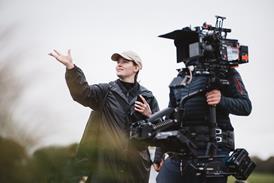
ScreenSkills’ refreshed five-year strategy offers the film and TV industry “more coherent” and comprehensive support, according to its chief executive.
Laura Mansfield told Screen’s sister site, Broadcast that the refreshed strategy, which centres collaborative partnerships with other industry bodies as well as offering greater transparency in its governance and work, was “wanted and needed” by the industry.
The Skills Task Force recommended in its report last year that the screen industries needed a pan-sector skills organisation that would deliver a comprehensive long-term plan and named ScreenSkills the best candidate to do this work.
“We’re seeking to bring a real sense of transparency to the organisation to make sure that we are collaborating and partnering more strategically – both internally and externally,” she said of the plan.
“It’s a real opportunity to show what we do and how we can support the sector. I think currently if you were talk to different people who’ve interacted with different parts of ScreenSkills, you might get five different answers about who we are and what we do. For us to have a greater impact and be more supportive of the whole sector, we need to be more coherent in how we deliver on our work.”
Mansfield joined ScreenSkills as chief exec at the beginning of this year, leaving her role as managing director of Outline Productions. Her work so far has focused on engaging with stakeholders and working on this new vision for the training body.
Part of that long-term vision is a smaller board of trustees for ScreenSkills, reducing the number from 16 to an as-yet unknown figure (Mansfield expects the eventual figure to be around a dozen).
The chief exec emphasised that it is “crucial” for ScreenSkills that the board has a proper mix of skills and representation. “We want to make sure that the nations and regions are represented, that different parts of the sector are represented, and that the skills that we need to take the strategy forward are represented,” she elaborated.
“For example, have we got people on the board who experienced in data and research? Have we got people on the board who can speak to education partnership? And as we’re seeking a smaller board, those trustees are going to have to be wearing multiple hats.”
Partnerships
Among the collaborative projects ScreenSkills has lined up as part of its five-year plan are key partnerships with Creative Diversity Network (CDN), Channel 4 and the BFI.
Its strategic partnership with CDN will see the two organisations sharing an office, as well as HR, logistics and finance services, though Mansfield is keen to point out the union is not a merger.
“There is a real appetite and Miranda [Wayland, CDN chief exec] and I have got a real vision of making things simpler for the whole industry – we’re going to be looking at a whole range of different ways we can work together,” she said.
“We have many of the same stakeholders, we have much of the same values and when you take their data and look at our initiatives, there’s a really good join up, but we could go further to support the industry.”
Mansfield is equally excited about the “foundational” research ScreenSkills and C4 have commission Ampere Analysis to conduct on the gathering detailed information on the breadth and scope of the industry’s film and TV workforce, from geography to roles to backgrounds.
“Right now, as an industry, we don’t really know how many people are currently working in the sector. This research will be annual, consistent, understandable and digestible,” she pledged.
While Mansfield noted that “change can be challenging” she made clear she is looking forward to delving into doing the work to bring the ScreenSkills strategy to life because its “what the industry wants and needs”.
“There’s exciting future growth, both in terms of inward investment and in terms of supporting native production to grow and thrive, but there is a lot to do. We’re not diverse enough, we don’t enable people from lower socio economic backgrounds to progress enough, the diversity percentages are not good enough, but there is an appetite for them to be,” she said.
“With everyone working together, we can do this. We can align the industry around this and I think people want to this.”
A version of this story first appeared on Screen’s sister site, Broadcast.









![[Clockwise from top left]: 'The Voice Of Hind Rajab', 'A House Of Dynamite', 'Jay Kelly', 'After The Hunt', 'The Smashing Machine'](https://d1nslcd7m2225b.cloudfront.net/Pictures/274x183/1/7/0/1459170_veniceawards_837515.jpg)















No comments yet